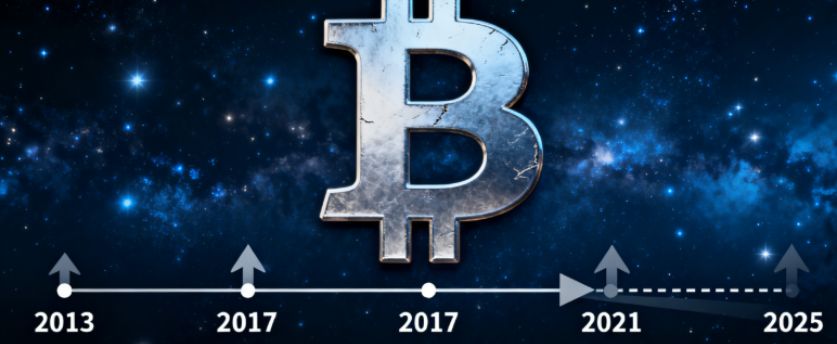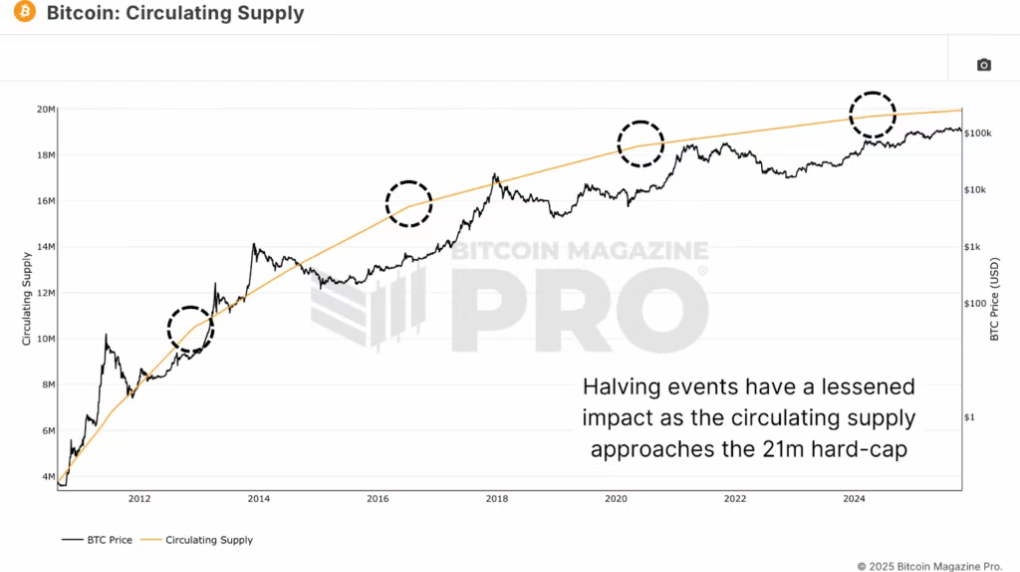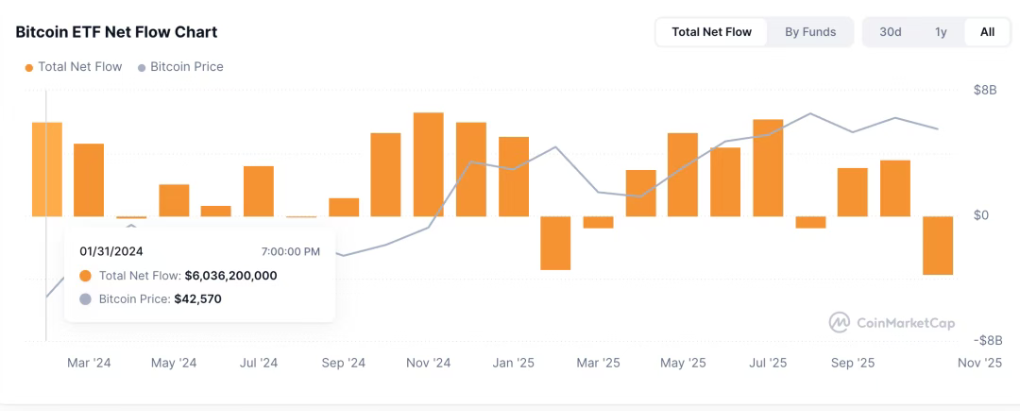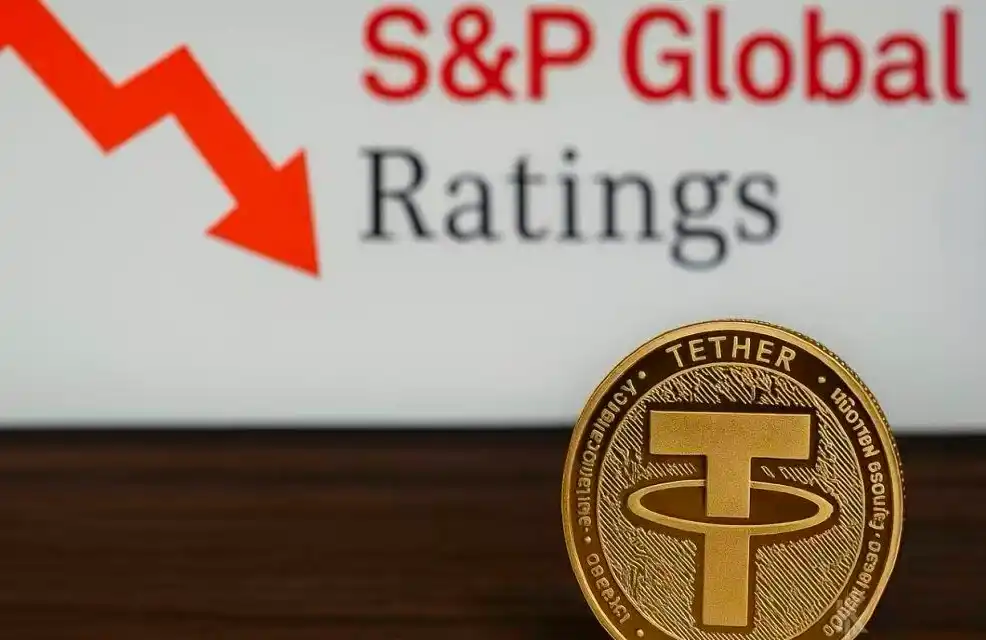From mining mechanisms to capital flows, the rules of the game for Bitcoin have changed.
"Bitcoin's previous four-year halving cycle has ended, and it has now been replaced by a two-year cycle." This viewpoint from Bitwise advisor Jeff Park has attracted widespread attention in the cryptocurrency market.
In the past, Bitcoin price trends followed a four-year cycle pattern driven by halving events. This mechanism was effective because it combined a preset supply shock with a reliably triggered market herd effect.
Now, however, this traditional cycle is being broken.

I. The Old Cycle: Resonance of the Halving Mechanism and Market Psychology
In Bitcoin's early design, Satoshi Nakamoto created artificial scarcity through the halving mechanism. Every 210,000 blocks mined (about four years), the reward for miners is halved.
● From 50 to 25, then to 12.5, 6.25, and now down to 3.125 BTC. This design mirrors the natural scarcity of gold and other precious metals, endowing Bitcoin with anti-inflationary properties. The halving event directly tightens the supply of new Bitcoin while squeezing miners' profit margins.
● Weaker miners are forced to exit the market, thereby reducing selling pressure.
● Looking back at history, each halving has indeed brought about a price surge.
In 2012, during the first halving, BTC was only $12.35, and six months later it rose to $127;
Around the second halving in 2016, BTC was about $650, and 150 days later it approached $760.
● Miners are the key players in this cycle. Their actions directly affect market supply—when rewards are halved and prices do not rise accordingly, inefficient miners face shutdown pressure.

II. The New Cycle: The Dominant Role of ETFs and Institutional Capital
The structure of the Bitcoin market has fundamentally changed. The traditional four-year cycle is being replaced by a two-year cycle, a shift driven by the economic behavior of institutional fund managers and ETF capital flows.
● The approval of US spot Bitcoin ETFs has brought about massive institutional capital inflows, creating an unprecedented demand shock. The operational logic of these institutional funds is completely different from that of traditional cryptocurrency investors.
● Fund managers face performance settlement pressure on December 31st each year, requiring them to lock in profits before year-end. This calendar-year-based assessment cycle greatly influences their investment decisions.
● When fund managers build positions at a certain price, they calculate the investment return targets they need to achieve in the next one or two years. If Bitcoin's price does not fluctuate but time keeps passing, this is actually unfavorable for institutional investors, as their annualized investment return rate declines over time.
III. Supply and Demand Imbalance: The Core Driver of Bitcoin's Long-Term Growth
Persistent supply and demand imbalance is the key factor driving Bitcoin's long-term growth. After the halving, Bitcoin's daily mining output has dropped to about 450 coins. On the demand side, however, there is explosive growth.
● By 2025, funds and ETFs will purchase an average of 1,430 Bitcoins per day, with corporations being the largest net buyers, averaging about 1,755 coins per day. This figure far exceeds the daily new issuance.
● Institutional purchasing power has created a significant supply and demand imbalance. On a certain day in August 2025, the net inflow was about three times the mining output of that day.
● With 95% of Bitcoin's total mineable supply already in circulation, and issuance slowing further after each halving, new supply is steadily decreasing while demand sources are becoming more diversified and institutionalized.
This ongoing supply squeeze may provide strong support for Bitcoin's price in the coming years.
IV. Volatility Returns: The Growing Impact of the Options Market
Bitcoin volatility has recently seen its first significant increase since 2025, signaling that the market may once again enter options-driven price action. As of November 26, 2025, data shows that the scale of open options contracts on the Deribit platform is astonishing.
● Put options expiring on December 26 with a strike price of $85,000 have open interest of $1 billion; at the same time, call options with a strike price of $140,000 have open interest of $950 million. The existence of these large options positions itself affects market price trends.
● Dealers' dynamic hedging operations to manage risk may intensify market volatility, forming self-fulfilling prophecies. Even during spot price declines, Bitcoin's implied volatility (IV) continues to rise.
This divergence indicates that the market is pricing in significant volatility—regardless of direction.

V. The Miner Dilemma: A Microcosm of the Transition Between Old and New Cycles
As the cornerstone of the Bitcoin network, miners are at the center of the vortex as old and new cycles alternate. Currently, the Bitcoin mining industry is in trouble. Over the past two months, the average 7-day miner revenue has dropped 35% from $60 million to $40 million.
● Miners are facing dual pressures: on one hand, Bitcoin's price has fallen about 30% from its peak to the $86,000 level; on the other hand, network hash rate has reached a record 1,078 Exahashes/second (EH/s).
● Rough estimates show that for large listed mining companies like Marathon Digital, the total mining cost per BTC exceeds $110,000. This means that at current prices, many miners are already below their economic breakeven point.
● Miners have to adjust their strategies—more and more miners are choosing to hold the BTC they mine, or even buy more BTC from the market, rather than sell.
● As long as miners' economic conditions keep their cash flow positive, they will continue mining, but under price pressure, the network's total hash rate may face adjustments.

VI. New Investment Strategies: Coping with the Changing Bitcoin Market
In the face of a changing market structure, investors need to adjust their strategies. The traditional "buy and hold" strategy is still effective, but may not be optimal. Understanding institutional capital flows has become key.
The cost basis of institutional investors has become a key price level.

Investors should pay attention to on-chain signals to understand changes in demand/supply.
● Exchange inflows represent increased supply (potential selling pressure), while exchange outflows indicate increased demand (stronger willingness to hold). Large purchases by whale addresses are an especially important demand signal.
Options market data also provides valuable insights.
● Strike prices with concentrated open interest often become price magnets, as dealers need to dynamically hedge their positions.
The rules of the game for Bitcoin have indeed changed, but they have not become unpredictable. The traditional four-year cycle is gradually fading from dominance, while a new two-year cycle is being shaped by institutional capital flows and the economic behavior of fund managers.
"Price always depends on marginal demand, marginal supply, and profit-taking behavior"; it's just that buyers have shifted from retail to institutions, and the importance of supply itself has diminished.
The good news is: as these buyers act as agents for others' funds, their behavior is easier to predict; and the weakening of supply constraints means that more predictable factors will take the lead.



